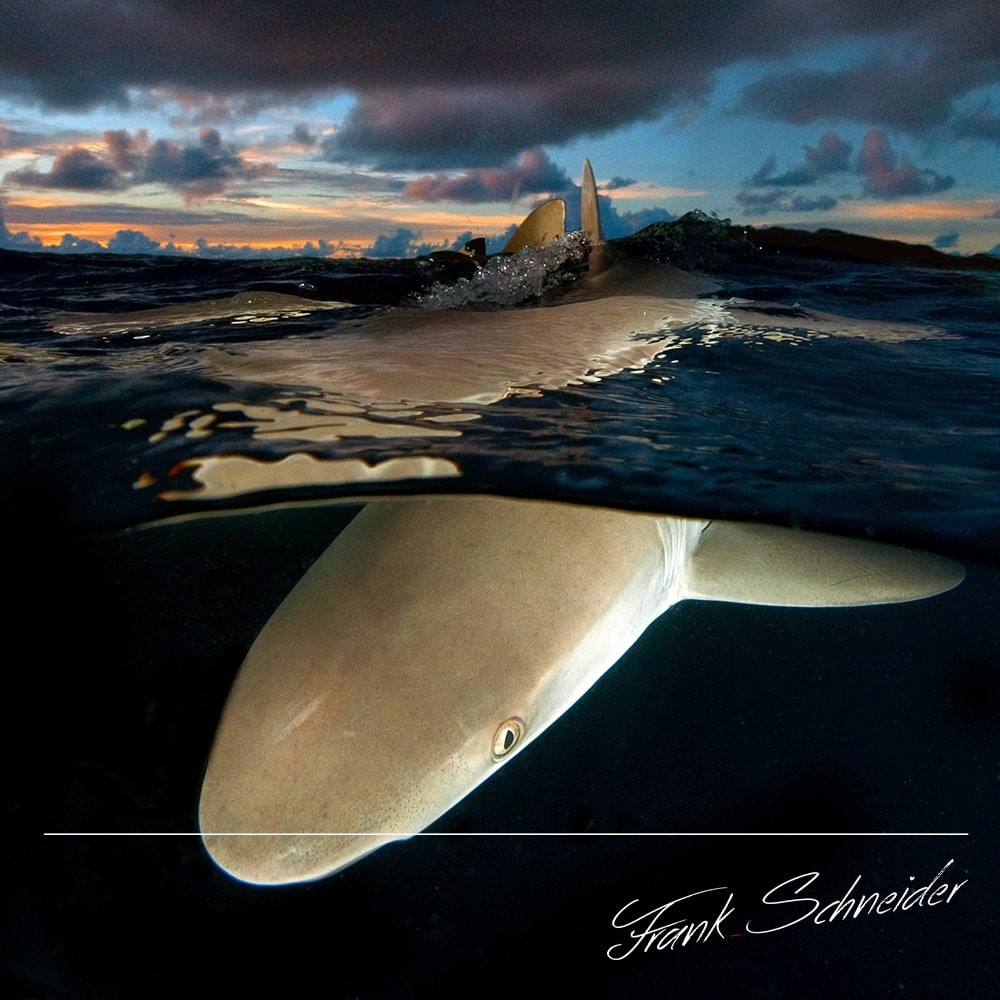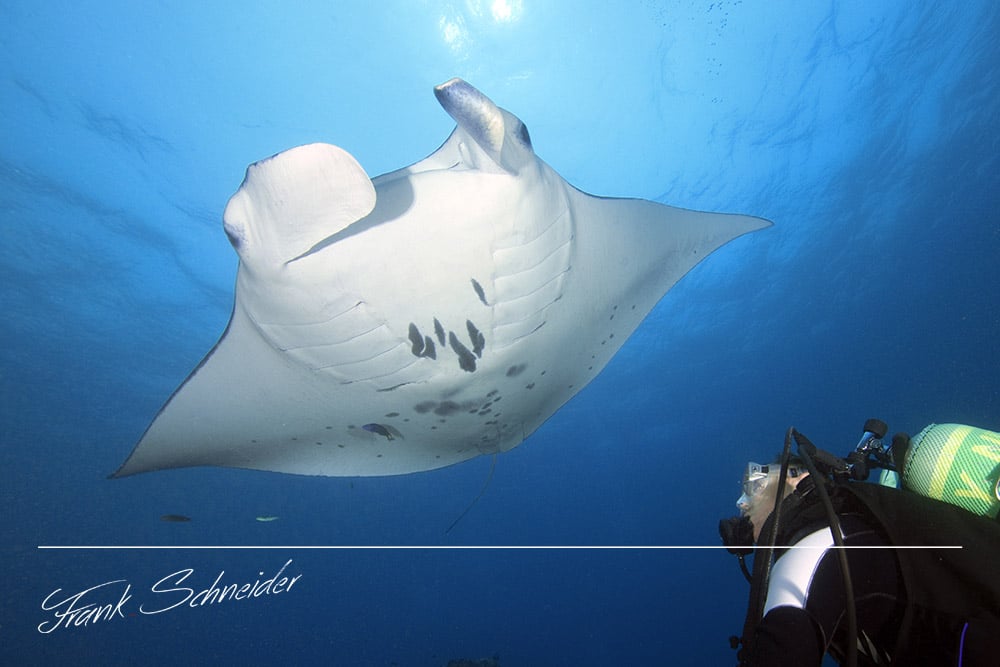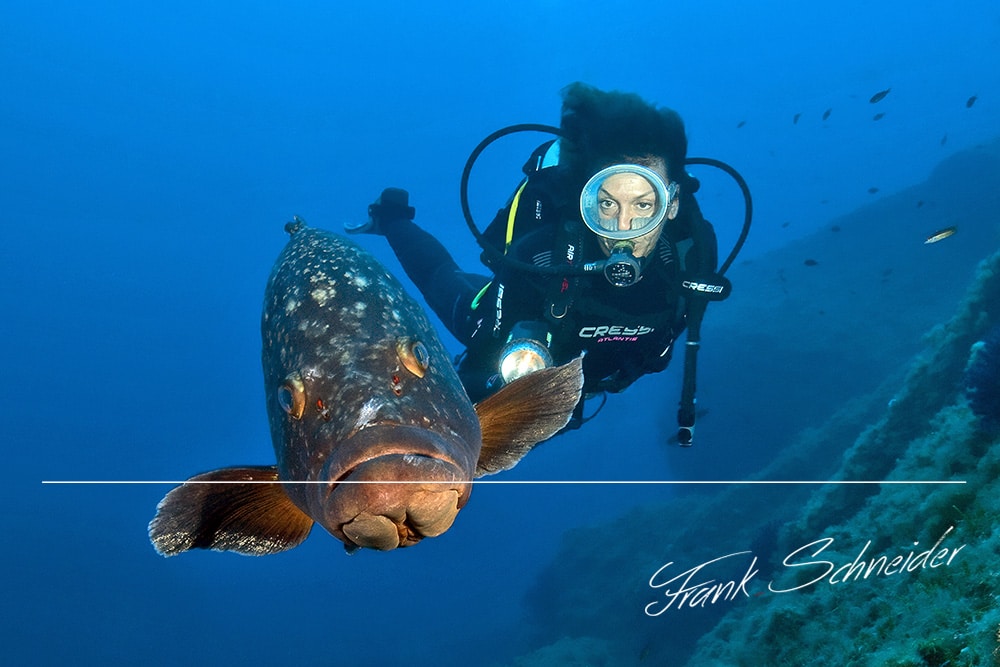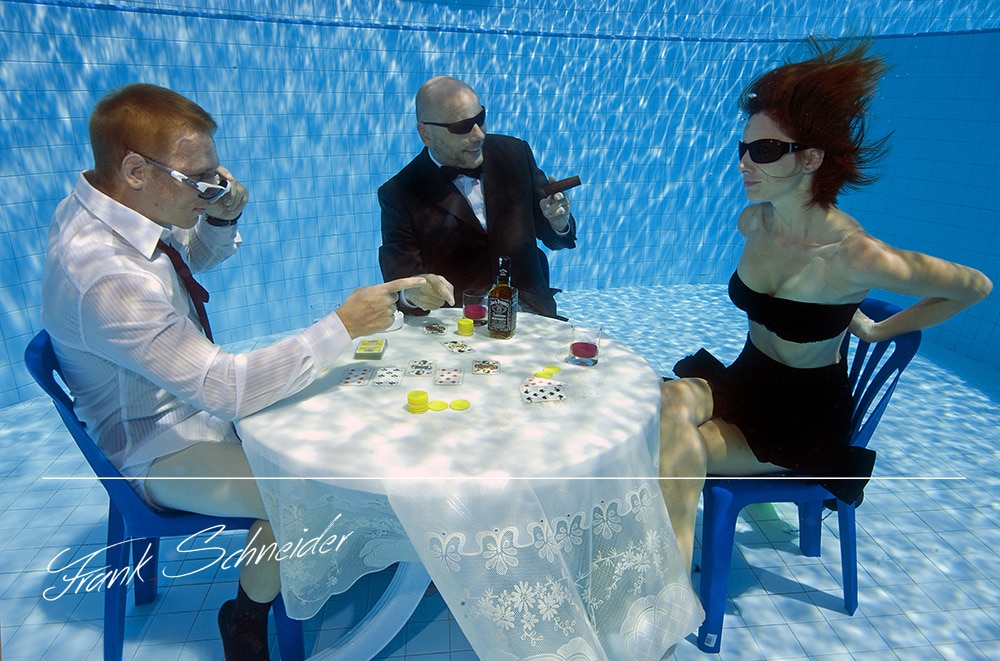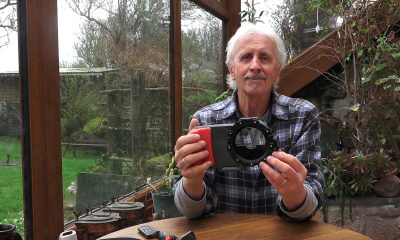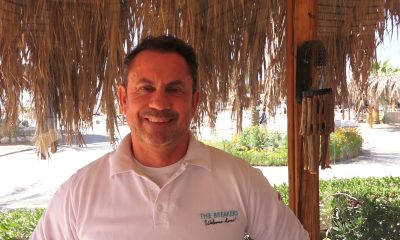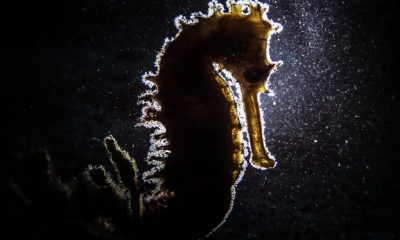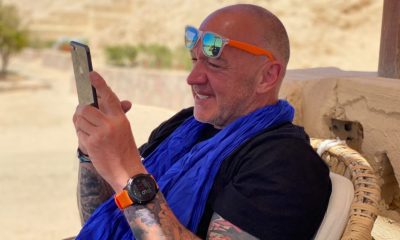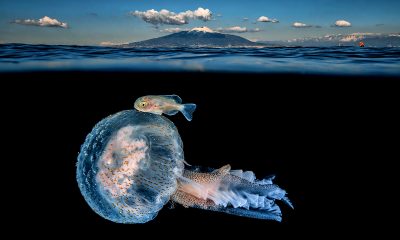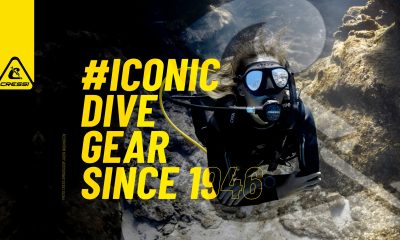News
Scubaverse Underwater Photographer Interview: Frank Schneider
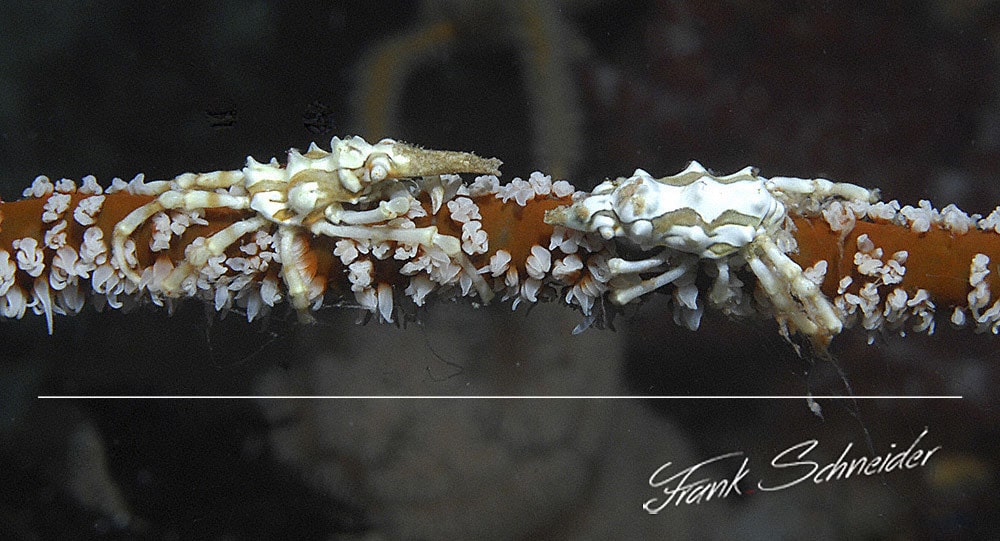
In an ongoing series, Scubaverse’s Underwater Photography Editor Nick Robertson-Brown talks to underwater photographers from around the world that he admires. In this blog: Frank Schneider
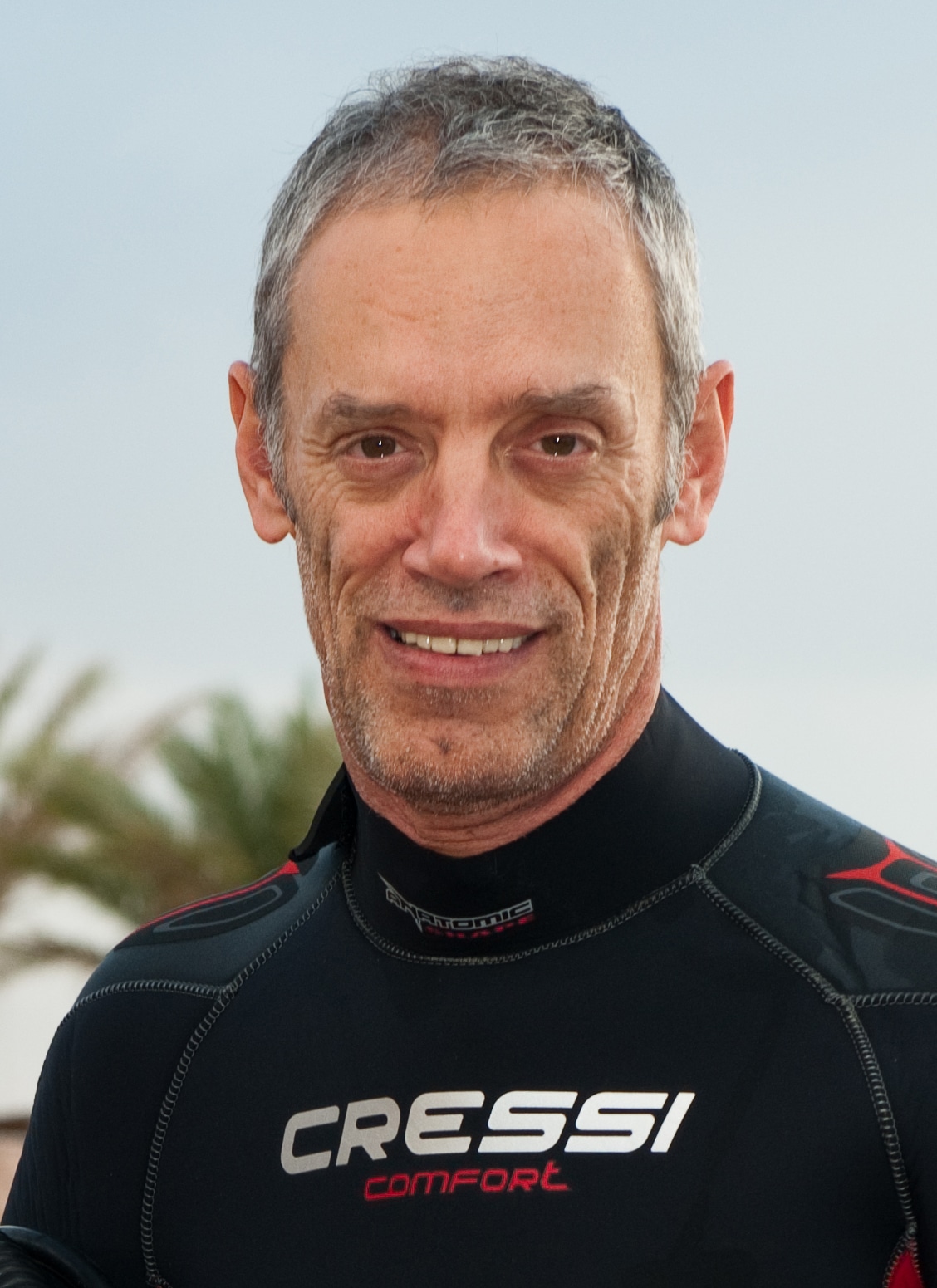 After my Sport Diver certification in 1982 a technical question to the chief editor of the scuba diving magazine “Tauchen” surprisingly lead to the first commission to write a travel report. This article, published in 1983, eventually turned out to be the starting point for my career as travel journalist. My articles have been published in many countries including Italy, Spain, England, Norway, Denmark, the Netherlands, Austria, Switzerland, Russia, Turkey and Croatia.
After my Sport Diver certification in 1982 a technical question to the chief editor of the scuba diving magazine “Tauchen” surprisingly lead to the first commission to write a travel report. This article, published in 1983, eventually turned out to be the starting point for my career as travel journalist. My articles have been published in many countries including Italy, Spain, England, Norway, Denmark, the Netherlands, Austria, Switzerland, Russia, Turkey and Croatia.
Nearly all my articles feature a female model because, even though images of pure nature can be quite nice, it is always recommendable to liven up pictures with people. An experienced photo model is indispensable – and for professional u/w photography she must have the nerve to pose for the camera both in the close company of sharks and not only on a dreamlike beach.
I entirely depend on my own equipment by Cressi-sub when it comes to reports which include underwater photography. I use a dry suit for cold water dives and neoprene -suits of diverse thickness depending on the waters that I dive in. Other than that, my models and I dive with the Cressi BCD “Travel Light” and “Cressi Ellipse Titanium – Mc9-SC” regulators or “Cressi Compact XS -MC9” regulators.. For our safety we rely on the Cressi computers “Giotto” and “Leonardo”.
NRB: How did your underwater photography start?
FS: I was the little kid trying to make friends with every kind of animal. I was found sleeping in the cats hideaway with her, with kitties in my arms without being attacked like the adults. And while on vacation in the countryside little Frank, together with a dog, was looking after geese, cows and horses. Later, sharks approached the wish list. As my mother was a professional photographer, I grew up with cameras and images. To combine nature, diving and photos was just a logical consequence for me.
NRB: What is your favourite u/w camera equipment (past & present) & why?
FS: After beginning with a Subal housing and a Canon, I worked with Nikonos cameras and a Nikon F3 in a Hugyfot housing. Now, for more than 15 years, I rely on Nikon in Seacam housings and Seacam strobes.
Underwater, I use the “Nikon D850” in a Seacam housing together with the Nikon f2,8/16 mm fisheye lens, the f2,8/14-24 mm wide angle zoom from Nikon and the Nikon 60 mm macro lens. One or two flashlights “Seacam Seaflash 150 TTL” take care of light and colours
Topside, I work with a “Nikon D850” and I use original Nikon lenses. Those range from a “16 mm fisheye” up to the telezoom “VR 70-200 mm”, all of which have a 2.8 f-stop.
NRB: What would be your advice to anyone new to underwater photography?
FS: Take your time. Good photos are no coincidence, they are created. And: go big with your main subject. If you have to explain where the subject in your image can be found, the photo is just bad. Important: no excuses. Only half the fish in the image, because he was too fast? Don’t explain – just delete. Only if you accept that a bad photo does not help you to increase your skills, you’ll make it. Prefer to show five good photos than five good ones and 20 bad ones. Those 20 remain in the head of your audience. Just avoid that.
NRB: What, or who, has been your single biggest inspiration for your underwater photography?
FS: Indeed, it was Jacques Cousteau. When I saw his films as a kid, my dream was just to visit some of the places he dived and filmed, like Precontinent II in Sudan. Then there was the photography in the family, and the combination came by itself.
NRB: What image are you most proud of and why?
FS: I really can’t tell. Maybe the head shot of a whale shark with a “small diver” in the background, or reef shark action with a model. The latest topshot is a photo of my model (this time my wife) in Fuerteventura. She is less then an arm length close to an angel shark, both on rocky ground, the shark rising his head really up, opening his jaws and showing all his teeth while the model watches it. Perfect composition, perfect lighting on both. I love photos of animals with a model. That’s a situation every diver wants to experience.
NRB: Where is your favourite dive location, and is it for the photography?
FS: To be honest, out of several thousands of dives there are only two handfuls without a camera. If you have more than one kid – would you name your favorite?
I love Embudu Island on the Maldives with the diverse options (reefs, nurse sharks, reef sharks, whale sharks), Yap Island with its famous manta places and channels, but I also love the Mediterranean, places like Portofino, Elba and Giglio in Italy. All these are underwater photo locations par excellence.
NRB: What are you views on marine life manipulation, moving subjects?
FS: Stick to the rules. I’d rather prefer to “chase” my human model into the right position. Ask them…
NRB: What do you look for when you are making your images?
FS: As a journalist I want to show how it is, I want to show people the true characteristics of a dive area/destination and of course create an image with a nice composition and perfect lighting.
NRB: What motivates you to take u/w photos?
FS: Photography is a very big part of my life and in general I love to create images. I think like most u/w photographers I want to show impressions of the world underwater. Finally, professional u/w photography has taken me around the planet, to each continent. Even to places one never could have seen without that background. Again it was, and it is, a kind of combination of many things.
NRB: If you could photograph any one thing/place what or where would that be?
FS: It doesn’t have to be mega spectaculous! However, definitely not a photo where one has to stay in a cage. That’s why I call those white-shark-photos boring. It is neither a kick for me nor any kind of photographic challenge – you just wait and click! I am rather after the perfect photo. Whatever it is. But as a pro you forever try the next – the final flawless – one. And repeat, of course. And then again…
To see more of Frank’s work visit his website by clicking here.
Blogs
Northern Red Sea Reefs and Wrecks Trip Report, Part 2: Wall to Wall Wrecks

Jake Davies boards Ghazala Explorer for an unforgettable Red Sea diving experience…
The second day’s diving was a day full of wreck diving at Abu Nuhas, which included the Chrisoula K, Carnatic, and Ghiannis D. The first dive of the day was onto the Chrisoula K, also known as the wreck of tiles. The 98m vessel remains largely intact where she was loaded with tiles which can be seen throughout the hold. The stern sits at 26m and the bow just below the surface. One of the highlights of the wreck is heading inside and seeing the workroom where the machinery used for cutting the tiles are perfectly intact. The bow provided some relaxing scenery as the bright sunlight highlighted the colours of the soft coral reef and the many reef fish.

Following breakfast, we then headed to the next wreck, which was the Carnatic. The Carnatic is an 89.9m sail steamer vessel that was built in Britain back in 1862. She ran aground on the reef back in 1869 and remains at 27m. At the time, she was carrying a range of items, including 40,000 sterling in gold. An impressive wreck where much of the superstructure remains, and the two large masts lay on the seafloor. The wooden ribs of the hull provide structures for lots of soft corals, and into the stern section, the light beams through, bouncing off the large shoals of glass fish that can be found using the structure as shelter from the larger predators that are found outside of the wreck.

The final wreck at Abu Nuhas was the Ghiannis D, originally called ‘Shoyo Maru,’ which was 99.5m long and built in Japan back in 1969 before becoming a Greek-registered cargo ship in 1980. The ship then ran aground on the reef on April 19th, 1983, and now sits at the bottom at a depth of 27m. Heading down the line, the stern of the ship remains in good condition compared to the rest of the hull. The highlight of the wreck, though, is heading into the stern section and down the flights of stairs to enter the engine room, which remains in good condition and is definitely worth exploring. After exploring the interior section of the ship, we then headed over to see the rest of the superstructure, where it’s particularly interesting to see the large table corals that have grown at the bow relatively quickly considering the date the ship sank. After surfacing and enjoying some afternoon snacks, we made sure everything was strapped down and secured as we would be heading north and crossing the Gulf of Suez, where the winds were still creating plenty of chop.

The next morning, it was a short hop to Ras Mohammed Nature Reserve for the next couple of days of diving. The 6am wake-up call came along with the briefing for the first site we would be diving, which was Shark & Yolanda. The low current conditions allowed us to start the dive at Anemone City, where we would drift along the steep, coral-filled wall. These dives involved drifts, as mooring in Ras Mohammed wasn’t allowed to protect the reefs. As a dive site, Shark & Yolanda is well-known and historically had a lot of sharks, but unfortunately not so many in recent years, especially not so early in the season. However, there was always a chance when looking out into the blue.

The gentle drift took us along the steep walls of the site, with plenty of anemone fish to be seen and a huge variety of corals. It wasn’t long into the dive before we were accompanied by a hawksbill turtle, who drifted with us between the two atolls before parting ways. Between the two reefs, the shallow patch with parts of coral heads surrounded by sand provided the chance to see a few blue-spotted stingrays that were mainly resting underneath the corals and are always a pleasure to see. With this being the morning dive, the early sunlight lit up the walls, providing tranquil moments. Looking out into the blue, there was very little to be seen, but a small shoal of batfish shimmering underneath the sunlight was a moment to capture as we watched them swim by as they watched us.

Towards the end of the dive, we stopped at the wreck of the Jolanda where the seafloor was scattered with toilets from the containers it was carrying. This provided a unique site to make a safety stop, which was also accompanied by a large barracuda slowly swimming by, along with a hawksbill turtle calmly swimming over the reef as the sun rays danced in the distance.
For the next dive, we headed north to the Strait of Tiran to explore the reefs situated between Tiran Island and Sharm El Sheik, which were named after the British divers who had found them. We started on Jackson before heading to Gordons Reef, where we also did the night dive. All the atolls at these sites provided stunning, bustling coral reefs close to the surface and steep walls to swim along, which always provided the opportunity to keep an eye out for some of the larger species that can be seen in the blue. Midwater around Jackson Reef was filled with red-toothed triggerfish and shoals of banner fish, which at times were so dense that you couldn’t see into the blue. Moments went by peacefully as we enjoyed the slow drift above the reef, watching these shoals swim around under the mid-afternoon sun.

The night dive at Gordon’s Reef was mainly among the stacks of corals surrounded by sand, which was great to explore under the darkness. After some time circling the corals, we came across what we were really hoping to find, and that was an octopus hunting on the reef. We spent the majority of the dive just watching it crawl among the reef, blending into its changing surroundings through changes in colour and skin texture. It’s always so fascinating and captivating to watch these incredibly intelligent animals, in awe of their ability to carry out these physical changes to perfectly blend into the reef. Before we knew it, it was time to head back to the boat to enjoy a well-deserved tasty dinner prepared by the talented chefs onboard.
Check in for the 3rd and final part of this series from Jake tomorrow!
To find out more about the Northern Red Sea reef and wrecks itineraries aboard Ghazala Explorer, or to book, contact Scuba Travel now:
Email: dive@scubatravel.com
Tel: +44 (0)1483 411590
Photos: Jake Davies / Avalon.Red
Marine Life & Conservation
Double Bubble for Basking Sharks

 The Shark Trust is excited to announce that, for two more days only, all donations, large or small, will be doubled in the Big Give Green Match Fund!
The Shark Trust is excited to announce that, for two more days only, all donations, large or small, will be doubled in the Big Give Green Match Fund!
Donate to Basking in Nature: Sighting Giants
The Shark Trust is hoping to raise £10k which will be doubled to £20k. This will go towards Basking in Nature: Sighting Giants. And they need YOUR help to reach they’re goal.
The Shark Trust’s citizen science project is to monitor and assess basking sharks through sightings; encouraging data collection, community engagement, and promoting nature accessibility. This initiative aims to enhance health and wellbeing by fostering a deeper connection with British Sharks.
Campaign Aims
- Increase citizen science reporting of Basking Sharks and other shark sightings to help inform shark and ray conservation.
- Provide educational talks about the diverse range of sharks and rays in British waters and accessible identification guides!
- Create engaging and fun information panels on how to ID the amazing sharks and rays we have on our doorstep! These can be used on coastal paths around the Southwest. With activities and information on how you can make a difference for sharks and rays!
- Promote mental wellbeing through increasing time in nature and discovering the wonders beneath the waves!
Donate, and double your impact. Click Here
-

 News3 months ago
News3 months agoHone your underwater photography skills with Alphamarine Photography at Red Sea Diving Safari in March
-

 News3 months ago
News3 months agoCapturing Critters in Lembeh Underwater Photography Workshop 2024: Event Roundup
-

 Marine Life & Conservation Blogs2 months ago
Marine Life & Conservation Blogs2 months agoCreature Feature: Swell Sharks
-

 Blogs2 months ago
Blogs2 months agoMurex Resorts: Passport to Paradise!
-

 Blogs2 months ago
Blogs2 months agoDiver Discovering Whale Skeletons Beneath Ice Judged World’s Best Underwater Photograph
-

 Gear Reviews2 months ago
Gear Reviews2 months agoGear Review: Oceanic+ Dive Housing for iPhone
-

 Marine Life & Conservation2 months ago
Marine Life & Conservation2 months agoSave the Manatee Club launches brand new webcams at Silver Springs State Park, Florida
-

 News3 months ago
News3 months agoWorld’s Best Underwater Photographers Unveil Breathtaking Images at World Shootout 2023


